Nicholas Kolarik and Andrii Zaiats, both doctoral students in the Ecology, Evolution, and Behavior program, and Jukes Liu, a doctoral student in the geophysics program, have won Future Investigators in NASA Earth and Space Science and Technology (NASA FINESST) awards.
The awards are research grants that empower students to advance research projects aligning with the interests of the NASA Science Mission Directorate.
Meet Andrii Zaiats
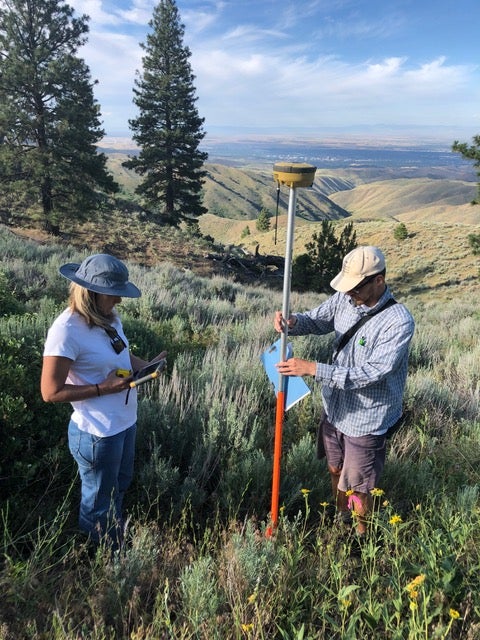
For Zaiats, The NASA FINESST award is an exceptional opportunity to advance the understanding of the relationships among plants, climate, and weather. In his award- winning research, Zaiats is working with Assistant Professor Trevor Caughlin to study how seasonal temperature patterns of the Earth surface define the fate of sagebrush seedlings Zaiats hails from Ivano-Frankinvsk, located in Ukraine, and holds a bachelor’s degree from Ivan Franko National University of Lviv, Ukraine, and a master’s from Boise State University.
Q: How is your research unique?
A: The thermal sensor on the International Space Station called ECOSTRESS is a relatively new tool available to ecologists only since 2018. We hypothesize that the information from ECOSTRESS, which ISS collects roughly every four days when it flies over our area could provide novel insights into stress detection of shrub seedlings. Combined with field observations, drone images and other satellite data, we hope to develop forecasting models that will be useful for practitioners in restoration planning.
Q: What is the potential impact of this research?
A: The United Nations established the 2020s as the Decade of Restoration which emphasizes the global need to improve the extent and quality of ecological restoration. This initiative is very relevant to the United States and the West. With the intensifying wildfire regimes across our region, integrative forecasting and restoration approaches will be necessary. Ecological forecasts of shrub land recovery can help in the decision-making process in restoration planning and implementation.
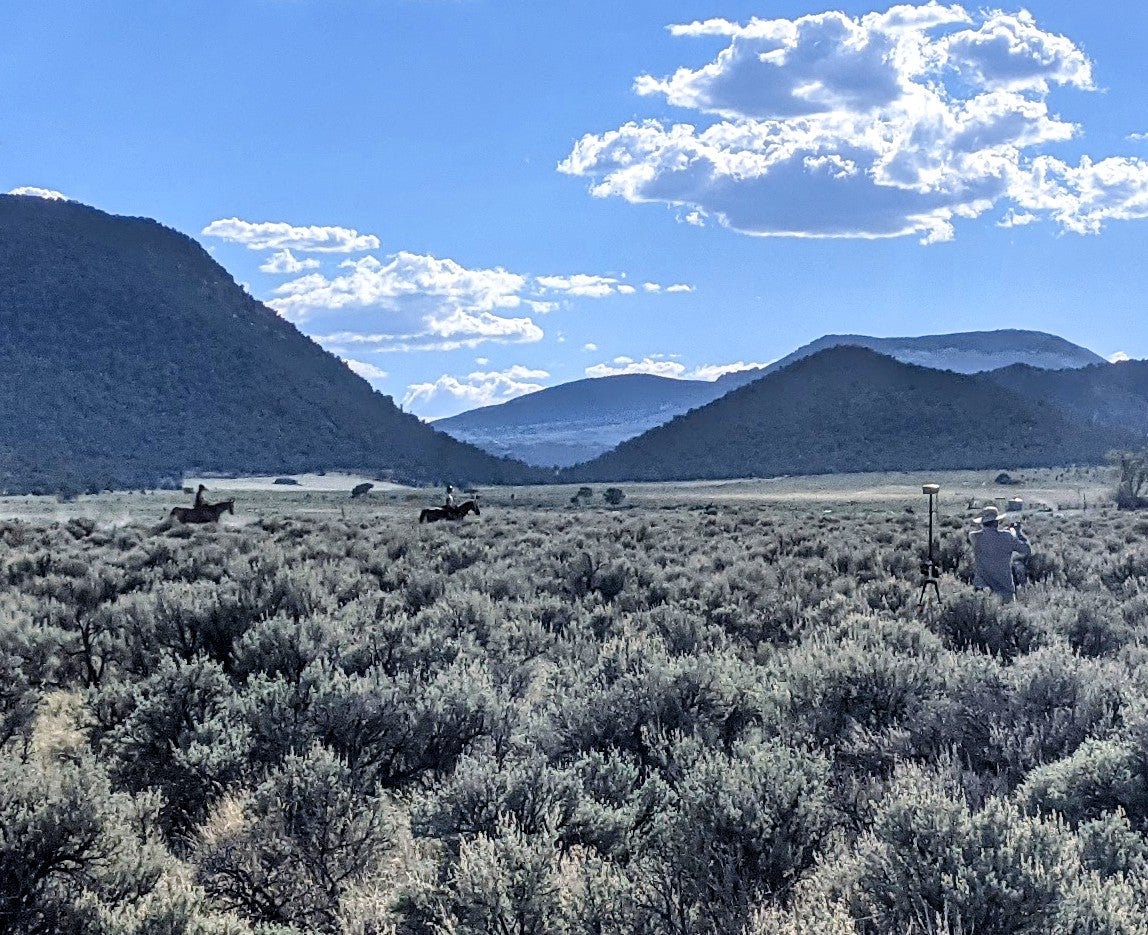
Q: Does your research impact Idaho?
A: Our research is relevant to Idaho’s ecosystems, particularly the Snake River Valley and the Owyhee region. Over the last century, Idaho has experienced almost 10,000 wildfires and we continue to observe devastating effects of increasingly large fires every year. Idaho ecosystems are also increasingly threatened by biological invaders and other human disturbance factors. These factors and the decline of natural habitats over the last decades demonstrate the urgent need for problem-oriented ecological research.
Q: How did you get interested in this research?
A: Plants and ecology have always been of interest. Over time, however, my interests evolved from natural history more towards quantitative ecology where I try to combine insights from different disciplines, including mathematical models, field observations, and remote sensing. This cross-disciplinary integration is exceptionally interesting and rewarding.
Q: Do you have a significant mentor, or someone who changed your course?
A: My first experience of the West was back in 2014, when I was privileged to participate in a Conservation and Land Management Internship run by the Chicago Botanic Garden. My mentor, Dean Tonenna, who is a botanist with the Bureau of Land Management, introduced me to desert and montane (mountainous) ecosystems which I immediately fell in love with. His mentorship was incredibly rewarding, from the skills to identify local plants and recognize ecological patterns to a deeper understanding of the natural and cultural history of the West.
Meet Jukes Liu
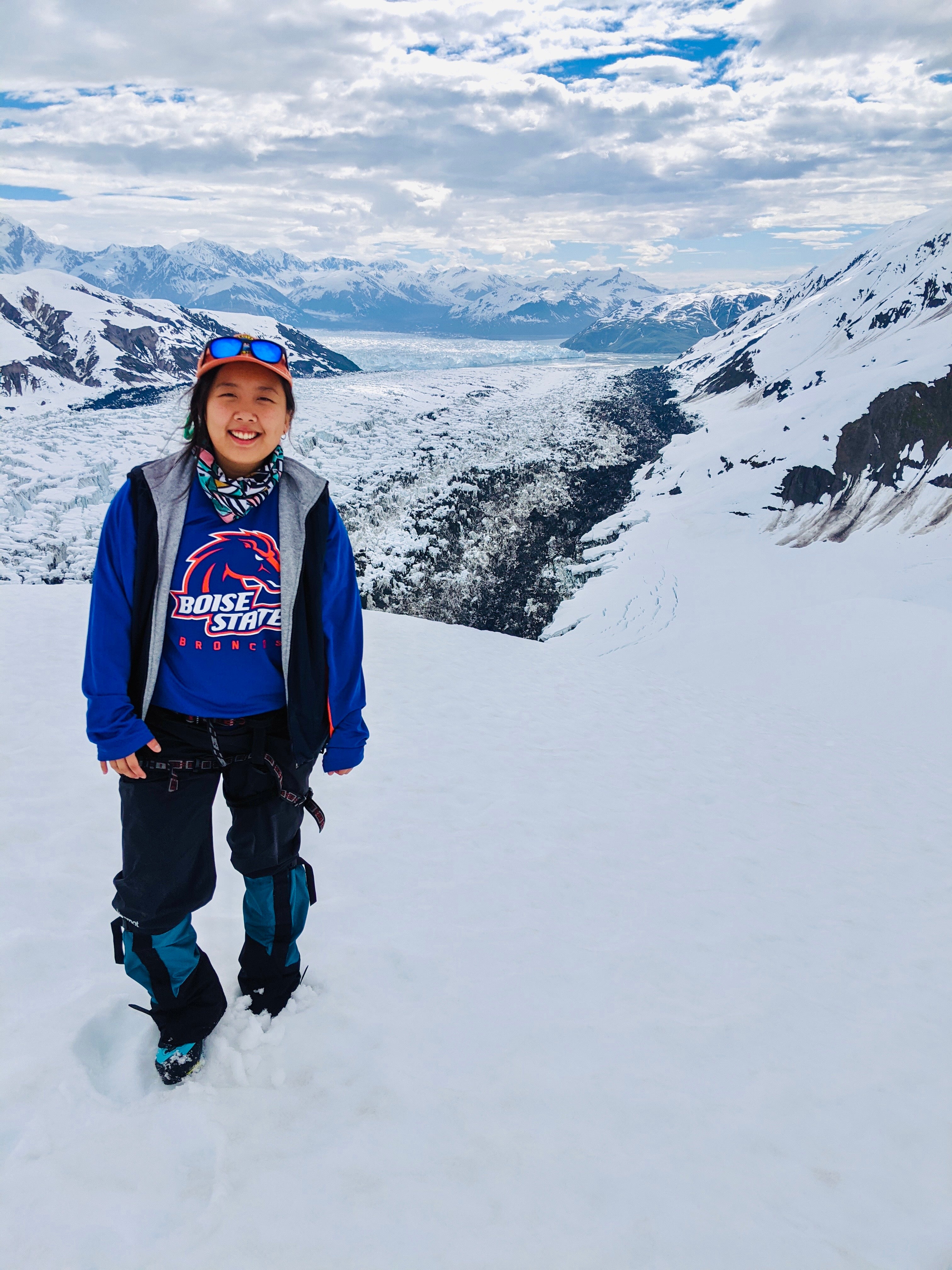
For Liu, the NASA FINNEST award will fund her proposed research to understand glacier surges in the Wrangell-St. Elias mountain range in southeastern Alaska and the Yukon, Canada. Liu hails from Bellevue, Washington, holds a bachelor’s degree from Dartmouth College and a master’s from Boise State University.
Q: How is your research unique?
A: Surge-type glaciers undergo cycles of quiescence and surging, where their flow increases 10- to 1000-times their typical flow speeds. While there have been many documented glacier surges in the past, with impacts such as infrastructure damage to nearby communities and rapid changes to the surrounding landscape, the triggers of glacier surges may vary and are still not well understood. My research will utilize cutting-edge satellite data analysis techniques to create an unprecedented detailed record of a glacier surge. In addition, my main research subject is a glacier with the shortest surge repeat interval in the world, five to six years. I had the rare opportunity to travel on and around the actively surging glacier, which is made up of unnervingly cracked and damaged ice: https://mashable.com/article/glacier-alaska-surge-change.
Q: What excites you most about this research?
A: I’m most excited about the novel and collaborative nature of this research project. Some of the key papers in glaciology were studies of glacier surges in the Wrangell-St. Elias range. With technological advances and increased availability of data, we have the opportunity to document glacier surges and investigate the controls on surge behavior with more detailed records and updated techniques. I believe that the findings from our project can be ground-breaking and will build upon the existing knowledge. In addition, our group from Boise State is collaborating with glaciologists at the University of Idaho to carry out this research. The combined efforts from scientists with different skill sets allow us to tackle hard-hitting questions related to controls on glacier surging.
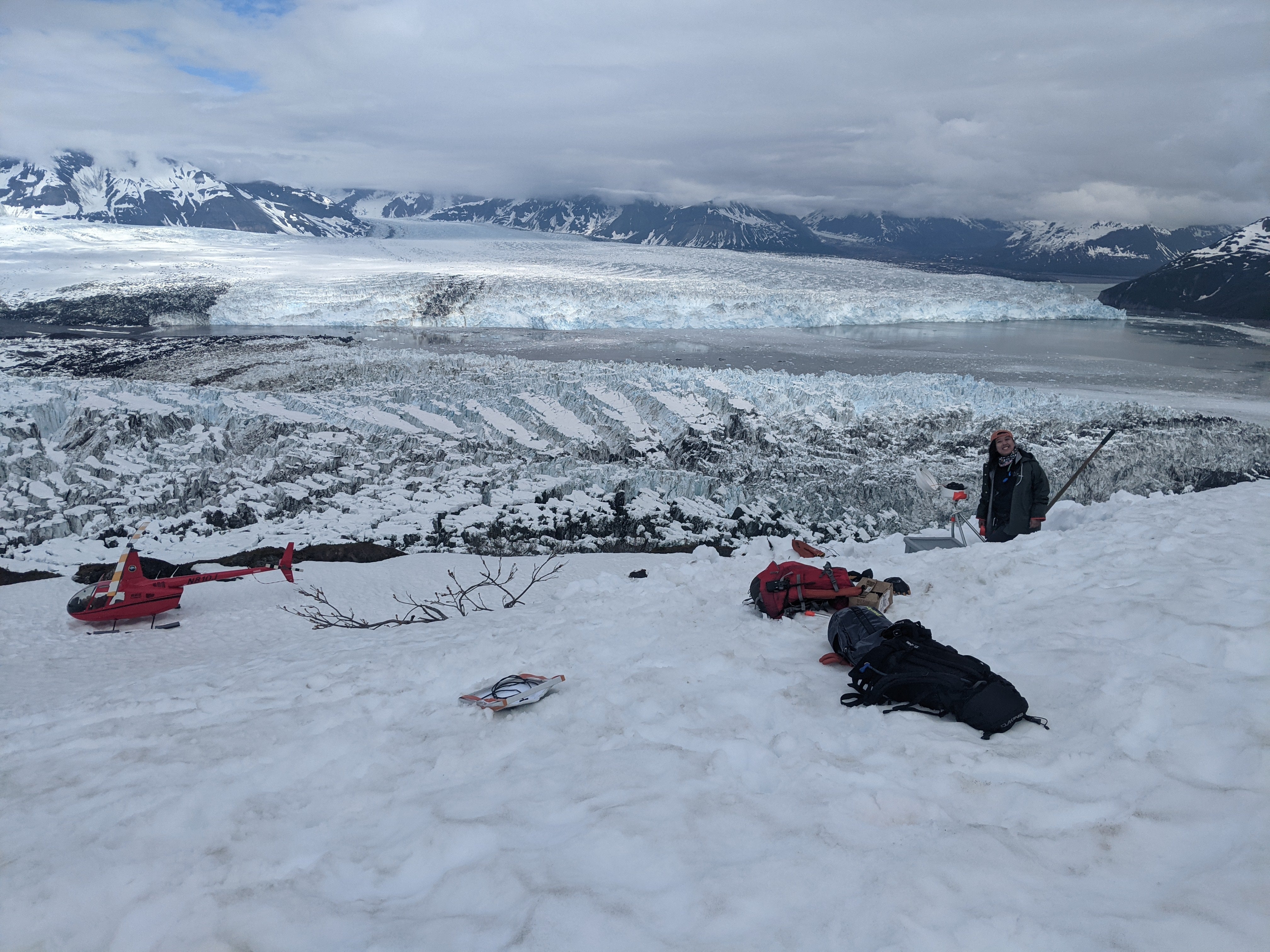
Q: What is the potential impact of this research?
A: Glacier surges can cause substantial damage to nearby infrastructure and can formed ice-dammed lakes which present flooding hazards. Understanding glacier flow instabilities may provide information relevant to managing these hazards. Also, increased understanding of glacier flow instabilities contributes to knowledge of glacier behavior and improves our ability to predict glacier changes in the future. The techniques I am developing for studying ice flow may improve the ease of glacier monitoring overall. Therefore, the research has potential local societal impacts as well as global environmental implications.
Q: Where and how your research is conducted?
A: The fieldwork for the project is conducted on Turner Glacier in southeastern Alaska. I have participated in the last two field campaigns, with another coming up in August. We placed a network of ~30 geophysical instruments on and around the glacier to monitor its movement and the movement of water in the glacier throughout its ongoing surge. We deploy and service our instruments via helicopter. Typically, this is done with a team of four or five consisting of folks from Boise State University and our collaborators at the University of Idaho. The rest of the research happens back home. I learn the data processing techniques and analyze satellite data and the data collected from the field from my office in the Environmental Research Building.
Do you have a significant mentor, or someone who changed your course?
My master’s and Ph.D. advisor, Dr. Ellyn Enderlin has been an incredible mentor over the last three years. Her guidance and support throughout my graduate career has allowed me to grow as a scientist and develop the skills I need to move my glaciological research forward.
Meet Nicholas Kolarik
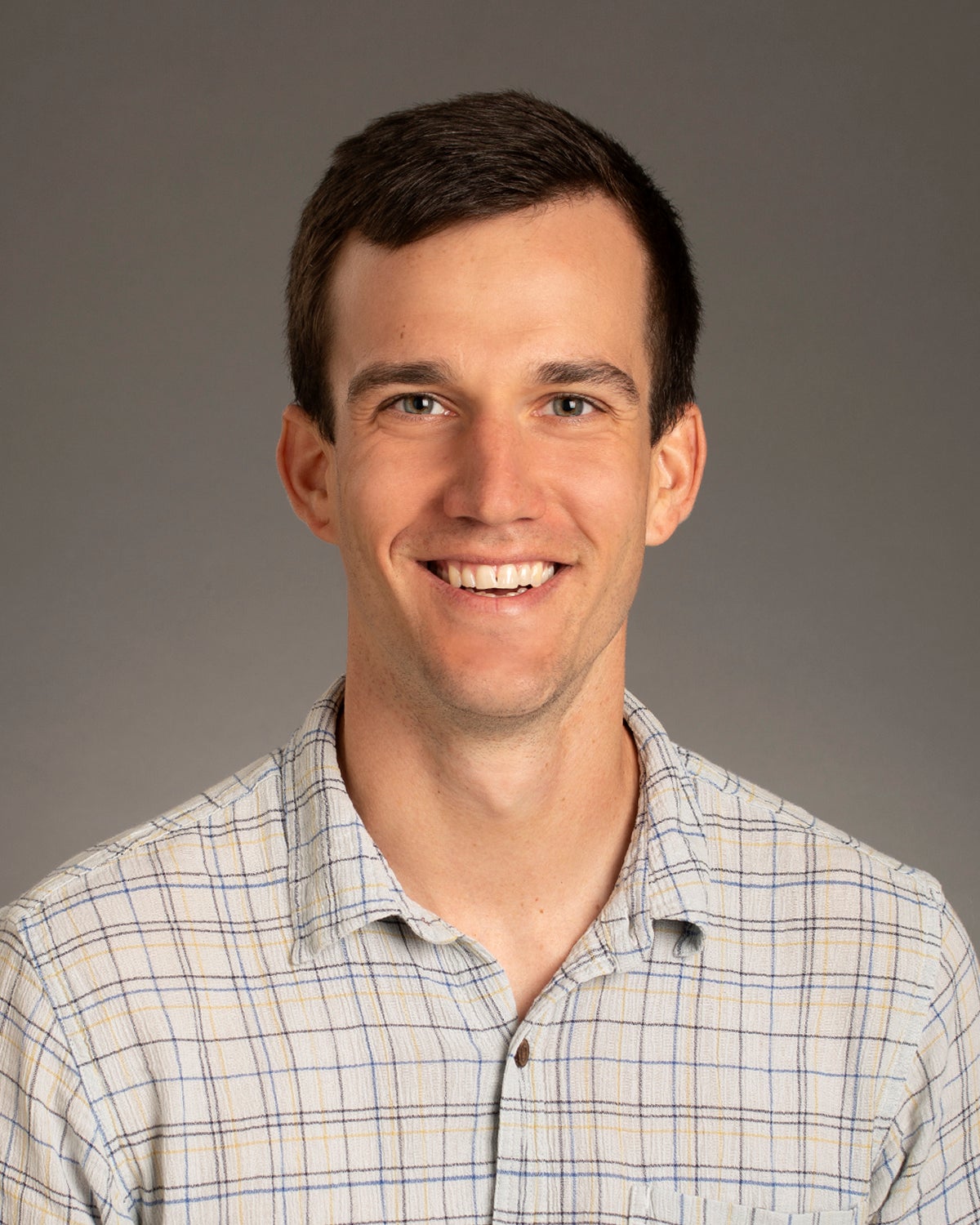
For Kolarik, the NASA FINESST award will support his research goals to quantify the effects of policy and management on water resources in the Mountain West. Kolarik hails from Baltimore, Maryland and holds a bachelor’s and a master’s degree from the University of Louisville, Kentucky.
Q: How did you get interested in this research?
A: I became interested in this research as an undergraduate when I was introduced to using satellite and aerial images to quantify environmental change. Once I understood that social and natural systems are inextricably linked, I was motivated to investigate how social-ecological systems operate and how to incorporate image analysis into designing potential solutions to wicked environmental issues.
Q: What is the potential impact of this research?
A: My research will elucidate causal drivers of changes in availability of water resources in semi-arid systems. Climate change and development have decreased overall water availability in these regions and represent significant threats to ecosystem functions. With the methods I have proposed, we can directly measure the effects of social processes (management and policy) on these resources and provide insight as to which tools are most effective for their conservation.
Q: What do you want people to know about your work?
A: The work I and many others are doing relies on publicly available datasets made possible by federal funding. The future of the planet depends on scientific advancement; continued investment in science is the only way to make advances possible.
Q: Does your research impact Idaho?
A: The focal study area for this research is the High Divide, a region of Eastern Idaho and Western Montana that includes from the Greater Yellowstone, Salmon-Selway, and Crown of the Continent eco regions. Policies and management strategies throughout this region vary and analyzing their impacts on water resources could help provide insight into effective conservation strategies.
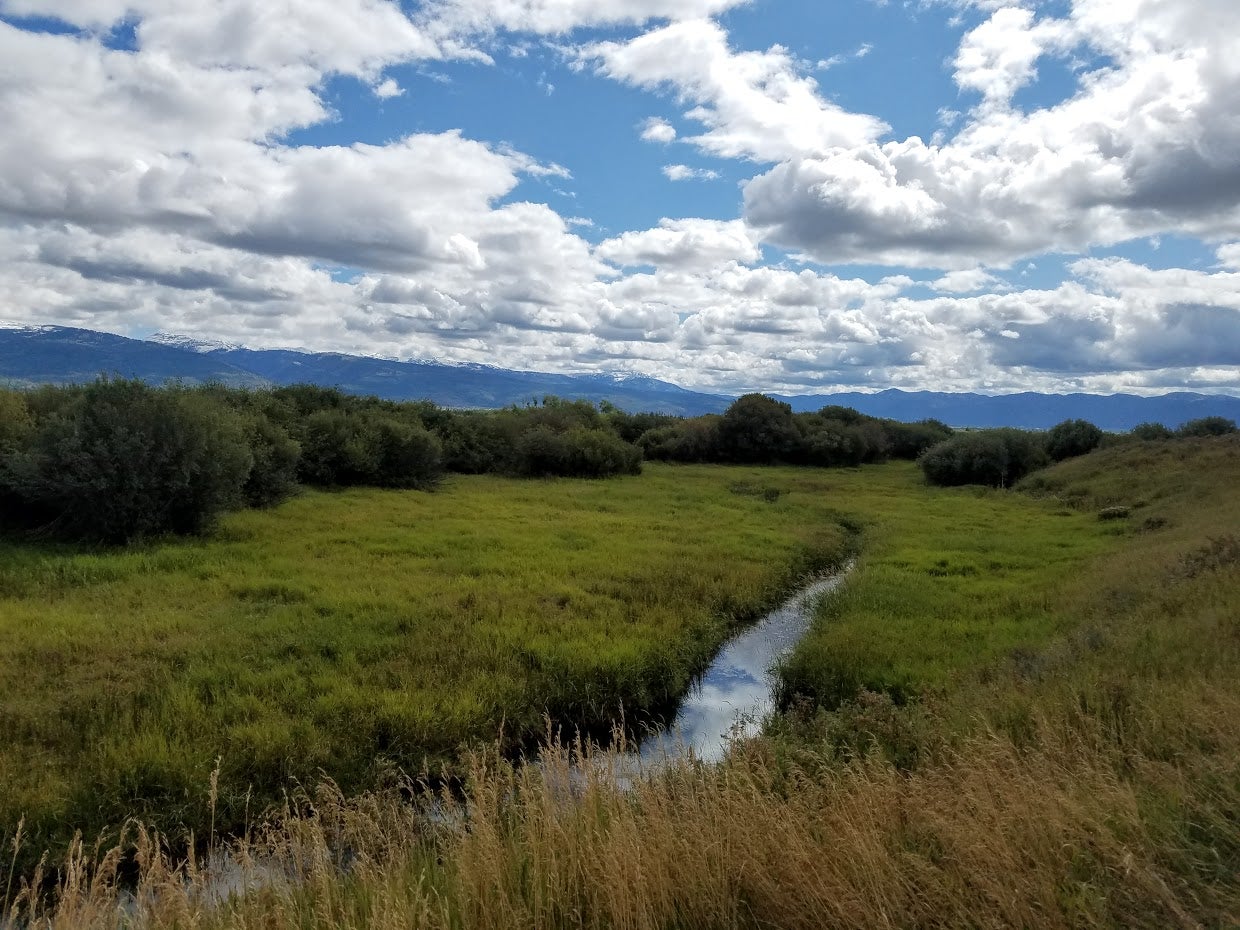
Q: What are your future goals?
A: I hope to work closely with conservation practitioners in the future to ensure that the tools we use are performing as designed. In short, asking ‘which conservation efforts are working and which aren’t? ‘
Q:Did you have a significant mentor, or someone who changed your course?
A: I have received a tremendous amount of support from mentors at the University of Louisville and here at Boise State. Dr. Jodi Brandt and Dr. Anand Roopsind continue to help me explore novel ways to apply image analysis to address pressing environmental issues.